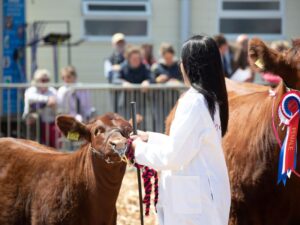Area payments have hobbled farming’s tenanted sector for over 15 years says the Central Association of Agricultural Valuers (CAAV) in its latest Annual Agricultural Land Occupation Survey, for 2021.
This is the latest in the CAAV series of surveys going back to the late 1970s showing decisions about the letting of land. The Survey also reviews the varied lengths of FBTs being granted and the reasons for them, showing how good use can be made of their freedom of contract to suit business circumstances.
As area subsidy payments (Single and Basic Payment) have paid people to occupy land, so they have reduced activity in the let sector. The CAAV surveys show that for England and Wales in each year since 2007:
- activity has only been between 30 and 40% of the 1999 level
- the number of new FBTs has only been around 25% of the number in 1999.
Amid current policy discussions concerning agriculture and as Basic Payment is lost, making full use of the tenanted sector is an important part of the changes required to tackle British farming’s productivity challenge, says CAAV secretary and adviser Jeremy Moody.
“Access for proficient farmers, existing and new, to land is a key constraint on raising productivity. The CAAV is actively looking at ways to tackle the stasis in land occupation reported in our surveys, with answers lying in areas such as taxation and housing. We are pleased to continue to contribute on these themes to the work of DEFRA’s Agricultural Productivity Task Force and elsewhere.”
While the average length of all FBTs, including seasonal grazing and specialist rotational cropping, was three years, according to the Survey, the average for FBTs let for more than a year was 4.7 years. That simple average hides more interesting and consistent patterns with:
- larger units let for longer – tenancies over 200 acres were let for an average of 6.4 years
- fully equipped units let for longer – tenancies with a dwelling were let for an average of 9.6 years.
New work in the Survey has found that in a quarter of lettings there were case specific reasons for the length chosen, from the tenant’s retirement date, investment plan or need to enter a scheme, to the landlord’s family plans or development expectations.
Other cases typically followed established practice and previous agreements. Owners and farmers have generally wanted flexibility in uncertain times but tenancy length is also influenced by it being seen as normal for FBTs to be short, despite them often being repeated, says Mr Moody. “It appears that the more FBTs are described as short, the more they are let for short terms.
“Yet, a tenant needing the Slurry Investment Grant will need a longer term as would a situation where the owner and farmer want to see soils improved. People need to understand the variety of options with FBTs. If it is seen as normal to let for a longer term, they will do so, based on business needs, not habits. FBTs offer great flexibility and that should be used.”
Periods of policy uncertainty are when many tenancies get shorter, adds Mr Moody. “We saw the lettings market disrupted for the Single Payment when access to land was access to payment. The negotiations for the 2013 Basic Payment regulations saw lettings shorten for the same reasons. This has happened again since 2018 as owners and farmers have tried to protect their position for future policies, including the lump sum and de-linking.”
The Survey saw the lowest area of newly let land in 10 years – 1,538 acres while only half of Agricultural Holding Act tenancies ending without a successor were re-let on FBTs – the lowest proportion seen in recent years, and consistent with policy uncertainty, says Mr Moody. “Yet the sector needs new land balance losses and to grow.”
Tenants perceived as new entrants by those contributing to the survey obtained 7.7% of all lettings and 28% where the change in tenancy saw a new occupier. New entrants tend to be offered longer tenancies with nearly a third of all lettings for a term of more than five years.
“This description of the tenanted sector also bears on the discussion of the interactions between let land and the developing public money for public goods schemes of post-Brexit policies, both as to tenants’ participation and whether the new options may prove to offer an alternative to letting land for farming,” says Mr Moody.
“As the Basic Payment becomes less significant in farm finances, so more farmers may focus on the business issues that could, with the right measures to support change, unlock a fresh wave of lettings, giving opportunities for the sector’s future.”
More Information
The full Survey can be seen on the CAAV website at: https://www.caav.org.uk/resources/free-publications/2021-2022-caav-agricultural-land-occupation-survey
Or in printed form from the CAAV.
The CAAV podcast on the Survey can be downloaded from the CAAV website at #46 The CAAV’s Agricultural Land Occupation Surveys 2021
About the CAAV
The Central Association of Agricultural Valuers (CAAV) is a specialist professional body representing, qualifying and briefing over 2,900 members practising in a diverse range of agricultural and rural work throughout England, Wales, Scotland and Northern Ireland.
CAAV members are agricultural and rural valuers who provide professional advice and valuation expertise on issues affecting the countryside from tenancy matters to sales and purchase of farms and land, from taxation and compulsory purchase to auctioneering, and from conservation issues to farming structures.
We are always happy to speak to the press – if you have any queries, please contact Marianne Curtis at Agri-hub PR on 07443 747808 or email [email protected].




